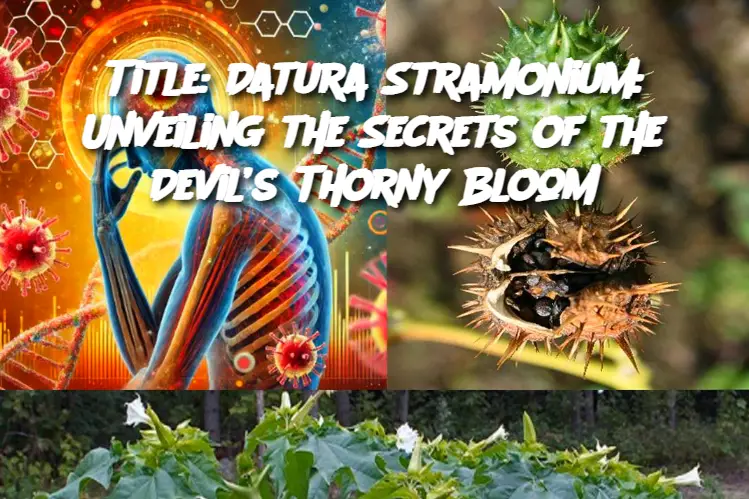-
Traditional Medicine:
-
In small, carefully controlled doses, Datura has been used historically to treat asthma, muscle spasms, and pain.
-
Applied topically in ointments for inflammation or nerve pain.
-
-
Spiritual & Shamanic Rituals:
-
Used in indigenous practices in the Americas and Asia to induce visions or trance-like states.
-
Considered a “plant teacher” by some cultures, though treated with extreme caution.
-
-
Folklore & Superstition:
-
Often associated with witchcraft and divination due to its hallucinogenic properties.
-
In Europe, it was believed to be an ingredient in “flying ointments” of witches.
-
Serving and Storage Tips (Safety and Handling):
⚠️ Warning: Datura is toxic. Ingestion, even in small amounts, can be fatal. Never consume or use this plant without professional supervision.
-
Do Not Ingest or Self-Medicate: All parts of the plant (leaves, seeds, flowers) are toxic and potentially lethal.
-
Wear Gloves When Handling: The plant’s oils can irritate skin or be absorbed through cuts.
-
Store Away from Children & Pets: Keep dried or live specimens in clearly labeled containers in a secure location.
-
Educate Before Cultivating: Some areas regulate or ban the cultivation of Datura due to its toxicity.
Variants (Related Species & Lookalikes):
-
Datura inoxia: Similar appearance but with more fragrant flowers; also toxic.
-
Brugmansia (Angel’s Trumpet): Related genus, similar properties, but tree-like in form.
-
Atropa belladonna (Deadly Nightshade): Another toxic plant in the nightshade family, historically used as a sedative and cosmetic.
-
Mandragora (Mandrake): Famed in legend, part of the same Solanaceae family, with narcotic roots.
FAQ:
Q: Is Datura stramonium legal to grow?
A: In many countries, it is legal to grow for ornamental or research purposes, but using it for recreational or medicinal purposes is often restricted or banned. Always check local regulations.
Q: What happens if someone ingests Datura?
A: Symptoms include confusion, hallucinations, dry mouth, rapid heartbeat, dilated pupils, and in severe cases—seizures, coma, or death. Immediate medical attention is critical.
Q: Are there any safe medicinal uses today?
A: While the alkaloids in Datura are still used in medicine (e.g., scopolamine patches for motion sickness), they are extracted, purified, and carefully dosed in clinical settings—not used in raw plant form.
Q: Can it harm pets or wildlife?
A: Yes. Datura is toxic to most animals. Consumption by pets or livestock can result in serious illness or death.
Q: Why do people still grow it?
A: Despite its dangers, some grow Datura for its dramatic flowers, historical significance, or as a botanical curiosity—always with caution and respect for its potency.
Conclusion:
Datura stramonium is not just another wildflower—it’s a potent plant steeped in mystery, medicine, and mythology. Its beauty hides danger, and its power demands respect. Whether you’re a gardener, herbal enthusiast, or curious learner, understanding the nature of this thorny botanical can deepen your appreciation for the complex relationship between humans and plants. But let this be clear: Datura is not a plant to experiment with—observe it, study it, but always handle it with care
